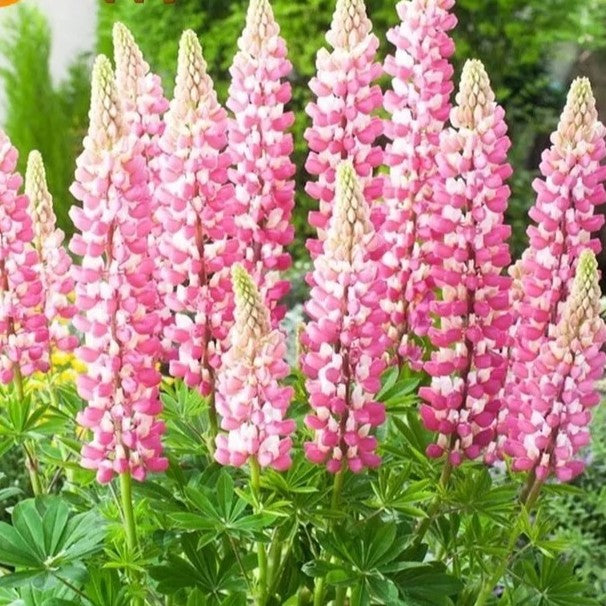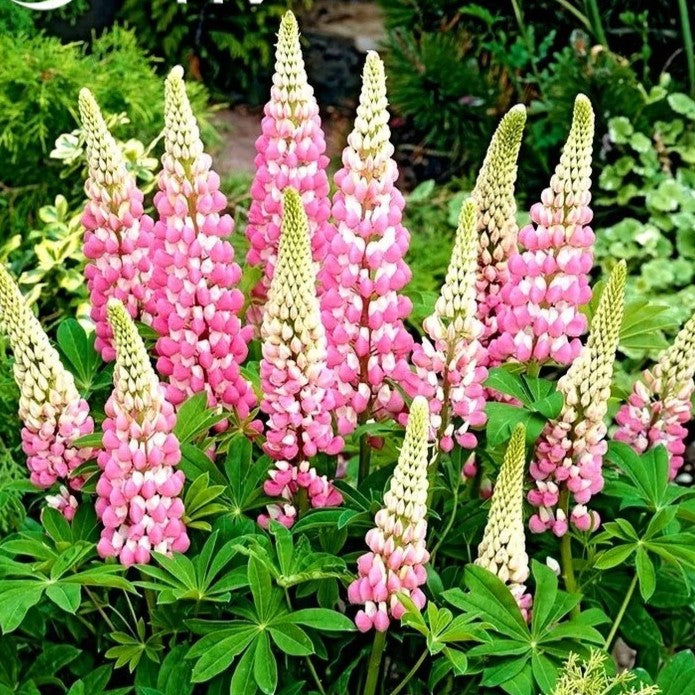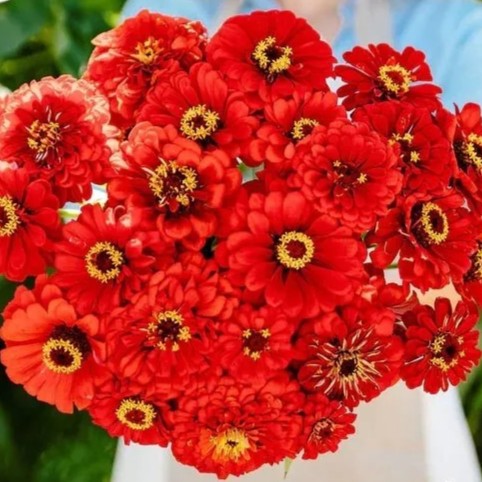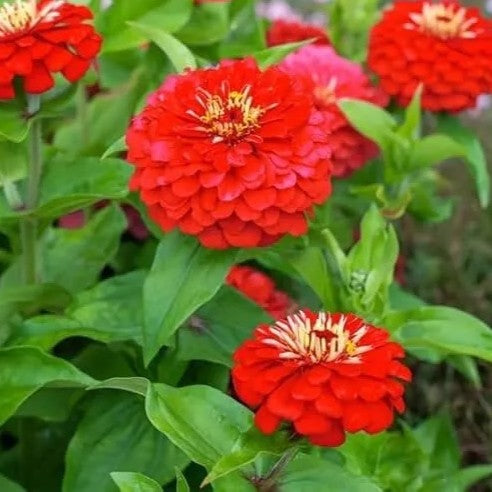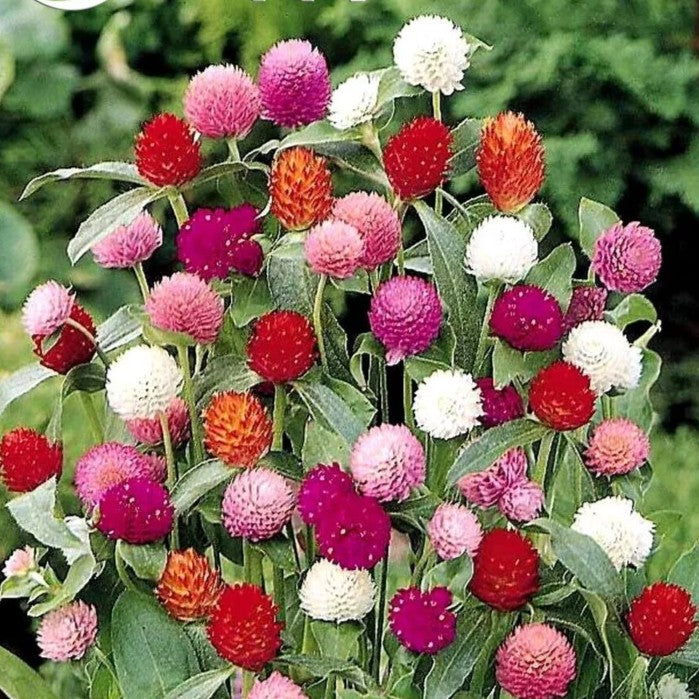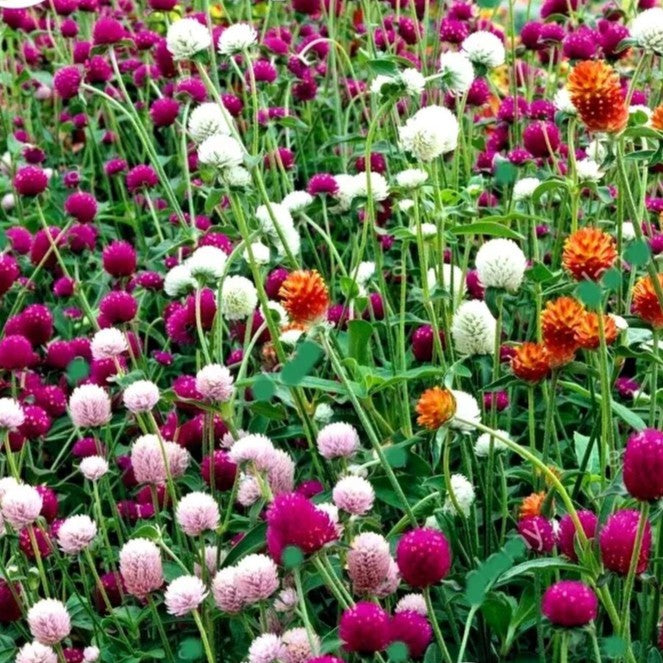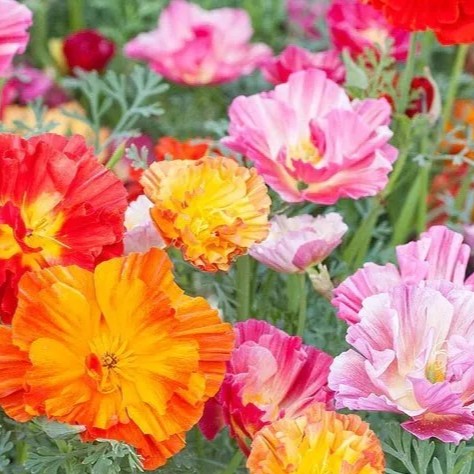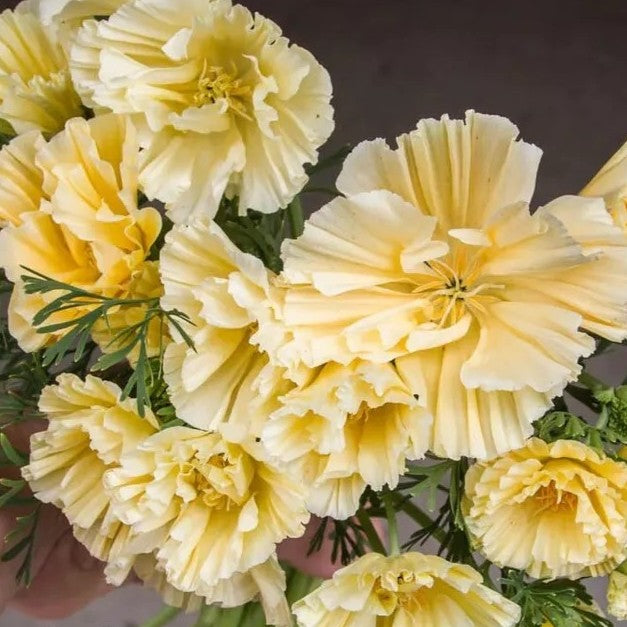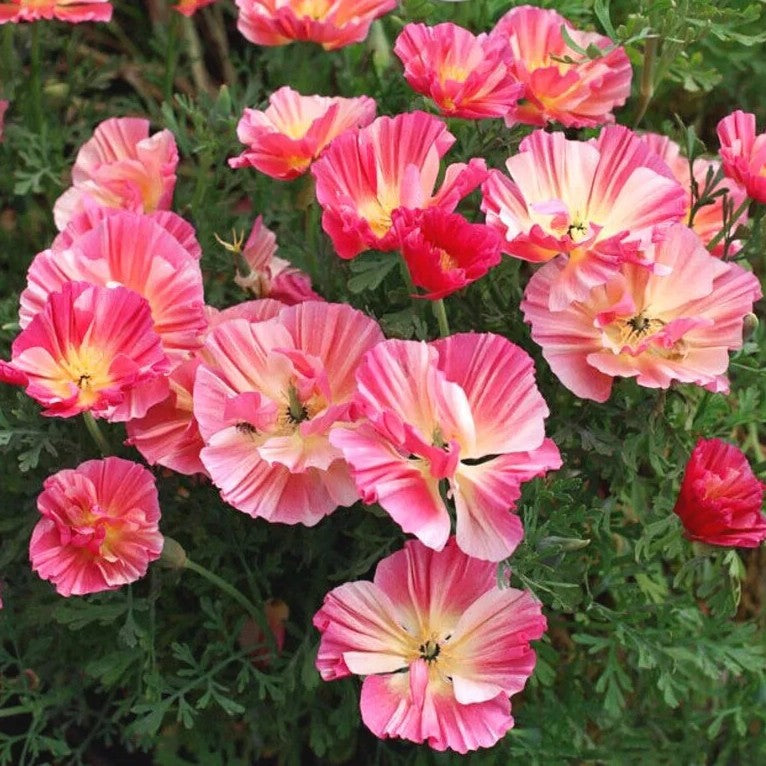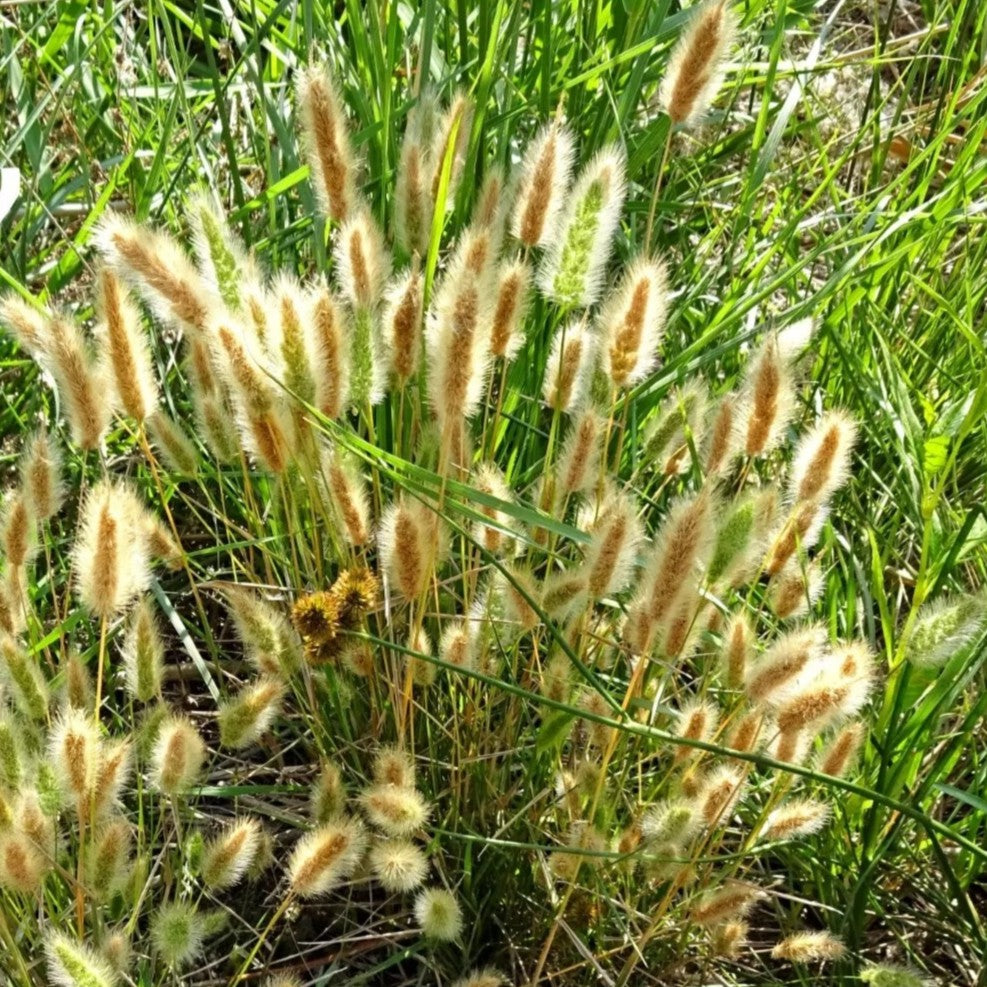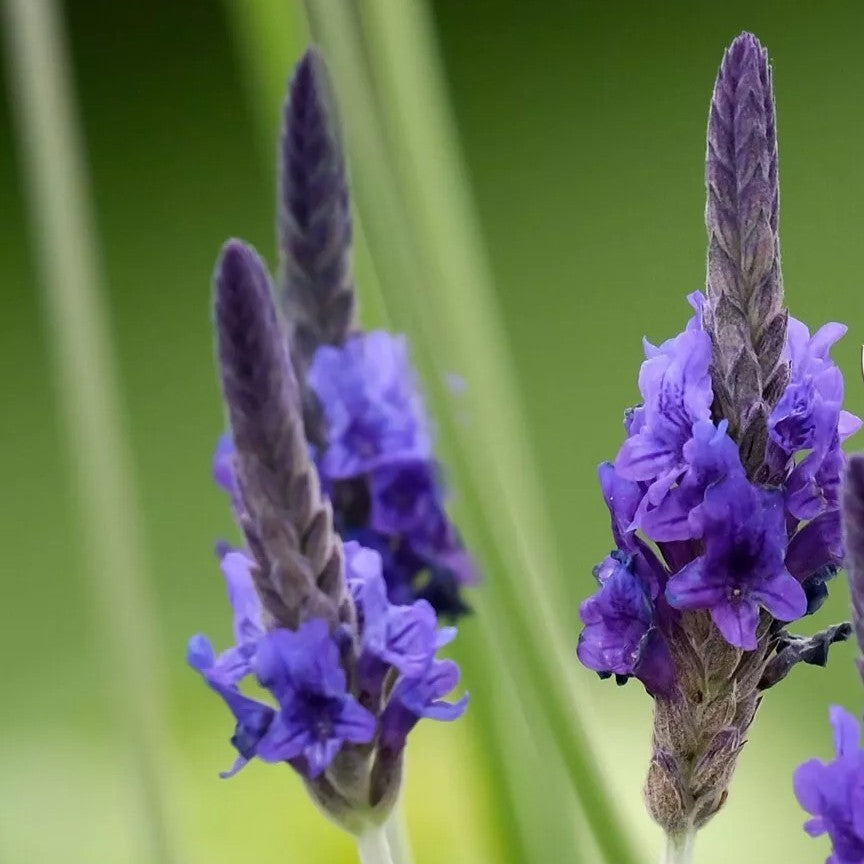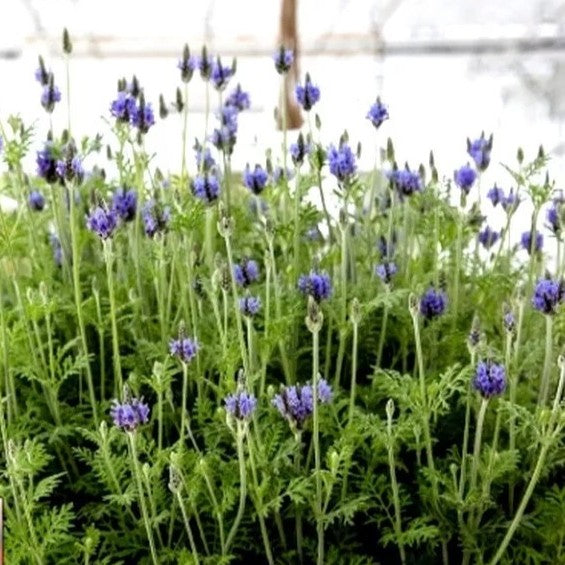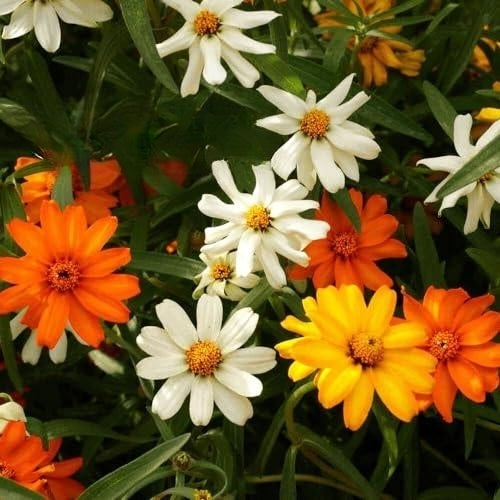Sort by:
211 products
211 products
Russell Lupin ‘Chatelaine Pink’ Seeds (Lupinus polyphyllus)
Add romantic charm to your garden with Russell Lupin ‘Chatelaine Pink’ (Lupinus polyphyllus). This hardy perennial produces tall spires of soft pink flowers that rise above lush green foliage, creating a dramatic vertical display. Ideal for borders, cottage gardens, and cut flower arrangements, it blooms from early to mid-summer and attracts pollinators to your garden.
How to Grow
-
Sow indoors in spring or autumn, or directly outdoors after the last frost.
-
Soak seeds in warm water overnight before sowing to improve germination.
-
Use well-drained soil in full sun or partial shade.
-
Cover seeds lightly with soil and keep moist until germination (14–28 days).
-
Transplant seedlings when large enough to handle, spacing 40–50 cm apart.
-
Deadhead spent blooms to encourage a second flowering.
Key Features
-
Tall spires of soft pink blooms for striking vertical accents
-
Hardy perennial, returning year after year
-
Excellent for borders, cottage gardens, and cut flowers
-
Attracts bees, butterflies, and other pollinators
-
Long-flowering, from early to mid-summer
Ideal For
-
Cottage gardens and mixed flower borders
-
Pollinator-friendly landscapes
-
Adding height and structure to garden plantings
-
Fresh cut flower arrangements
Sowing
-
Best time: Spring or autumn
-
Germination: 14–28 days
-
Pre-soak seeds overnight before sowing
-
Prefers sunny, well-drained soil
Quick Tip
-
Avoid disturbing established plants—lupins prefer to remain in place for best performance.
Zinnia Dahliaflowered Red ‘Will Rogers’ Seeds (Zinnia elegans)
Add vibrant, long-lasting color to your garden with Zinnia Dahliaflowered Red ‘Will Rogers’ (Zinnia elegans). This striking annual produces large, dahlia-like red blooms that stand out in borders, beds, and containers. Easy to grow and exceptionally hardy, it provides a stunning display from summer to autumn and is perfect for cut flower arrangements.
How to Grow
-
Sow indoors in early spring or directly outdoors after the last frost.
-
Use well-drained soil in a sunny location.
-
Lightly cover seeds with soil and keep moist until germination (7–14 days).
-
Thin seedlings to 20–25 cm apart for healthy growth.
-
Water regularly but avoid waterlogging.
-
Deadhead spent blooms to encourage continuous flowering.
Key Features
-
Large, dahlia-like red flowers that make a bold statement
-
Long-flowering annual, blooming summer through autumn
-
Easy to grow and maintain, suitable for beginners
-
Excellent for fresh cut flowers and bouquets
-
Attracts pollinators such as bees and butterflies
Ideal For
-
Flower beds and borders
-
Containers, patio planters, and window boxes
-
Cutting gardens for bouquets
-
Pollinator-friendly garden designs
Sowing
-
Best time: Early spring indoors or after frost outdoors
-
Germination: 7–14 days
-
Sow thinly, cover lightly, and keep soil moist
-
Prefers full sun and well-drained soil
Quick Tip
-
Regular deadheading prolongs flowering and keeps the plants looking vibrant throughout the season.
Globe Amaranth Tall Mix Seeds (Gomphrena globosa)
Bring lasting color and texture to your garden with Globe Amaranth Tall Mix (Gomphrena globosa). This easy-to-grow annual produces clusters of globe-shaped flowers in vibrant shades of pink, purple, red, and white. Heat- and drought-tolerant, it thrives in sunny spots and makes an excellent cut flower, retaining its color beautifully when dried.
How to Grow
-
Sow indoors in spring or directly outdoors after the last frost.
-
Use well-drained soil in a warm, sunny position.
-
Cover seeds lightly with soil and keep moist until germination (7–14 days).
-
Transplant seedlings when large enough to handle, spacing 25–30 cm apart.
-
Water moderately—plants prefer drier conditions once established.
-
Cut regularly to encourage continuous blooming.
Key Features
-
Tall plants with globe-shaped flowers in mixed vibrant colors
-
Excellent for fresh and dried floral arrangements
-
Heat- and drought-tolerant, thriving in poor soils
-
Long-flowering annual, blooming summer through autumn
-
Low-maintenance and highly resilient
Ideal For
-
Cutting gardens and dried flower arrangements
-
Sunny borders and beds
-
Containers and patio planters
-
Pollinator-friendly garden designs
Sowing
-
Best time: Spring indoors or after frost outdoors
-
Germination: 7–14 days
-
Sow thinly, cover lightly, and keep soil moist
-
Prefers full sun and well-drained soil
Quick Tip
-
Harvest flowers just as they open fully for the longest-lasting dried blooms.
California Poppy ‘Frilly Fun’ Seeds (Eschscholzia californica)
Add a burst of playful charm to your garden with California Poppy ‘Frilly Fun’ (Eschscholzia californica). This unique variety of the classic California poppy produces finely frilled, ruffled petals in vibrant shades of orange, yellow, and gold. Hardy, drought-tolerant, and easy to grow, it’s the perfect choice for brightening beds, borders, and wildflower-style plantings.
How to Grow
-
Sow directly outdoors in spring or autumn, as California poppies dislike transplanting.
-
Choose poor to moderately fertile, well-drained soil in full sun.
-
Scatter seeds thinly on the surface and cover lightly with fine soil.
-
Water gently until established; then reduce watering, as plants thrive in dry conditions.
-
Germination usually occurs within 14–21 days.
-
Deadhead spent blooms to encourage continued flowering.
Key Features
-
Distinctive frilly, ruffled blooms in bright golden shades
-
Hardy, drought-tolerant annual, perfect for low-maintenance gardens
-
Long-flowering, bringing color from summer into autumn
-
Attracts pollinators including bees and butterflies
-
Excellent for naturalistic and wildflower-style plantings
Ideal For
-
Wildflower meadows and cottage gardens
-
Rock gardens and sunny borders
-
Low-maintenance landscapes
-
Adding cheerful color to poor or dry soils
Sowing
-
Best time: Spring or autumn directly outdoors
-
Germination: 14–21 days
-
Sow thinly, cover lightly, and water until established
-
Prefers full sun and free-draining soil
Quick Tip
-
For a natural, meadow-like effect, scatter seeds in drifts rather than rows.
Rabbit’s Foot Grass Seeds – Polypogon monspeliensis
Add a touch of softness and movement to your garden with Rabbit’s Foot Grass (Polypogon monspeliensis). This annual ornamental grass produces charming, fluffy flower heads resembling rabbit’s feet, swaying gracefully in the breeze. Perfect for borders, containers, or dried arrangements, it’s a unique addition to any garden design.
How to Grow
-
Sow directly outdoors in spring after the last frost or start indoors earlier.
-
Use well-drained soil in a sunny to partially shaded location.
-
Lightly press seeds into the soil without covering deeply.
-
Keep soil moist until germination, usually within 7–14 days.
-
Thin seedlings as they grow to allow good air circulation.
-
Harvest flower heads for drying when they are fully developed.
Key Features
-
Produces fluffy, rabbit-foot-like flower heads
-
Adds movement and texture to gardens and containers
-
Annual grass, fast and easy to grow
-
Excellent for dried flower arrangements and crafts
-
Attracts interest as a decorative garden accent
Ideal For
-
Cottage gardens and naturalistic plantings
-
Borders and flower beds
-
Containers and pots
-
Dried floral arrangements and bouquets
Sowing
-
Best time: Spring after frost
-
Germination time: 7–14 days
-
Sow thinly, lightly cover, and keep soil moist
-
Prefers full sun to partial shade
Quick Tip
-
For longer-lasting dried arrangements, cut flower heads just before they fully open and hang them upside down to dry.
Egyptian Lavender Seeds – Lavandula multifida
Transform your garden with the exotic charm of Egyptian Lavender (Lavandula multifida). Celebrated for its feathery silver-green foliage and striking purple flower spikes, this hardy perennial brings fragrance, beauty, and pollinator activity to any outdoor space. Naturally drought-tolerant and low-maintenance, it thrives in hot, sunny climates with minimal care.
How to Grow
-
Sow seeds indoors in early spring or directly outdoors once the risk of frost has passed.
-
Choose well-drained sandy or gritty soil in a location with full sun.
-
Lightly press seeds into the soil surface, covering very thinly.
-
Keep the soil slightly moist until germination, which usually takes 10–20 days.
-
Once established, water sparingly—lavender prefers dry conditions.
-
Prune lightly after flowering to maintain shape and encourage fresh growth.
Key Features
-
Distinctive feathery foliage and vibrant purple flower spikes
-
Aromatic leaves and blooms, ideal for drying and potpourri
-
Naturally drought-resistant and thrives in poor soils
-
Attracts bees, butterflies, and other pollinators
-
Hardy perennial suited to hot and dry environments
Ideal For
-
Mediterranean and xeriscape gardens
-
Rockeries, borders, and sunny slopes
-
Container planting for patios and balconies
-
Pollinator-friendly garden designs
Sowing
-
Best time: Early spring indoors or outdoors after frost
-
Germination time: 10–20 days
-
Lightly cover seeds with fine soil or vermiculite
-
Maintain warmth and sunlight during germination
Quick Tip
-
Avoid overwatering—Egyptian Lavender flourishes in dry conditions and poor soils where other plants struggle.
Statice ‘Petit Bouquet’ Mix – Seeds
(Limonium sinuatum) – Annual Cut Flower
The Statice ‘Petit Bouquet’ mix produces compact plants covered in clusters of papery flowers in shades of blue, pink, yellow, white, and lavender. Known for their exceptional vase life, these blooms remain vibrant whether fresh or dried, making them a favorite for bouquets and floral crafts.
Key Features
-
Type: Annual
-
Height: 30–45 cm
-
Blooming period: June–September
-
Position: Full sun
-
Soil: Well-drained, sandy or loamy soil
Ideal For
-
Fresh and dried flower arrangements
-
Borders and cottage gardens
-
Cutting gardens
-
Long-lasting floral crafts
Sowing & Growing
-
Sow indoors: March–April, in trays or pots at 18–22°C
-
Sow outdoors: May, after last frost
-
Sowing depth: 0.5 cm
-
Spacing: 25–30 cm apart
-
Care: Prefers sunny, sheltered spots; drought-tolerant once established
Classic Zinnia – Seeds
(Zinnia linearis angustifolia) – Annual
The Classic Zinnia (Zinnia linearis angustifolia) is a compact and easy-to-grow annual, loved for its masses of daisy-like blooms in bright shades of yellow, orange, and white. Unlike tall zinnia varieties, this type has a bushy, spreading habit and flowers abundantly all summer long, making it perfect for edging, borders, and pots. It is drought-tolerant, long-flowering, and pollinator-friendly, ensuring a cheerful display with minimal effort.
Key Features
-
Type: Annual
-
Height: 20–40 cm
-
Spread: 25–35 cm
-
Blooming period: June–October
-
Position: Full sun
-
Soil: Well-drained, moderately fertile
Ideal For
-
Bedding and borders
-
Containers and pots
-
Pollinator-friendly gardens
-
Low-maintenance summer color
Sowing & Growing
-
Sow indoors: March–April (in trays or pots at 18–22°C)
-
Sow outdoors: May (after frost has passed)
-
Sowing depth: 0.5 cm, cover lightly with soil
-
Spacing: 25–30 cm apart
-
Care: Prefers sunny spots; deadhead to extend flowering season

Superb Pink Dianthus Superbus - 200 seeds (Dianthus superbus) Perennial Fragrant Flowers
£1.15
Unit price perSuperb Pink Dianthus Superbus - 200 seeds (Dianthus superbus) Perennial Fragrant Flowers
£1.15
Unit price perSuperb Pink – Seeds
(Dianthus superbus) – Perennial, Fragrant Flowers
The Superb Pink (Dianthus superbus) is a charming, hardy perennial known for its deeply fringed, feathery petals and sweet fragrance. Its delicate pink blooms appear in summer and are highly attractive to bees, butterflies, and other pollinators. A traditional cottage garden favorite, this variety brings romantic color and scent to borders, rock gardens, and wildflower-style plantings.
Key Features
-
Type: Perennial, fragrant flower
-
Height: 40–60 cm
-
Spread: 25–30 cm
-
Blooming period: June–August
-
Position: Full sun or partial shade
-
Soil: Well-drained, moderately fertile
Ideal For
-
Cottage and wild gardens
-
Pollinator-friendly planting
-
Rock gardens and meadow borders
-
Cut flower use thanks to its fragrance
Sowing & Growing
-
Sow indoors: February–April (in trays or pots at 18–20°C)
-
Sow outdoors: May–June (direct in prepared soil)
-
Sowing depth: Lightly cover with soil (fine seeds need minimal covering)
-
Spacing: 25–30 cm apart
-
Care: Hardy and low-maintenance; deadhead to prolong flowering
Showing 27/211





